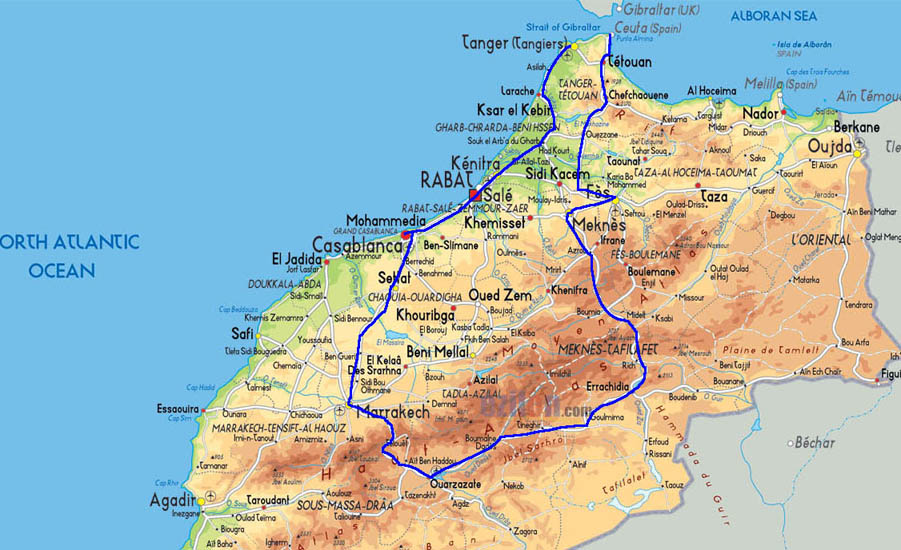
... my planned journey (counterclockwise) and that's how it went ...
Crtd 13-03-20 Lastedit 15-10-24
I planned to make a round going South at the coastal side, then cross the Atlas to Marrakech, head NorthEast at the desert side then cross the passes to Meknès and Fèz, finally head North through the Rif to the Spanish enclave Ceuta.

... my planned journey (counterclockwise) and that's how
it went ...
I drove exactly as I planned. The main contrast turned out to be between East and West of the Atlas mountains.
The West side is Europe for all practical matters. The East (desert) is a
totally different story.
But everywhere bank cards worked to get cash, even
debit cards, and everywhere I could navigate with Google Maps on my smartphone
with a Moroccan internet SIM.
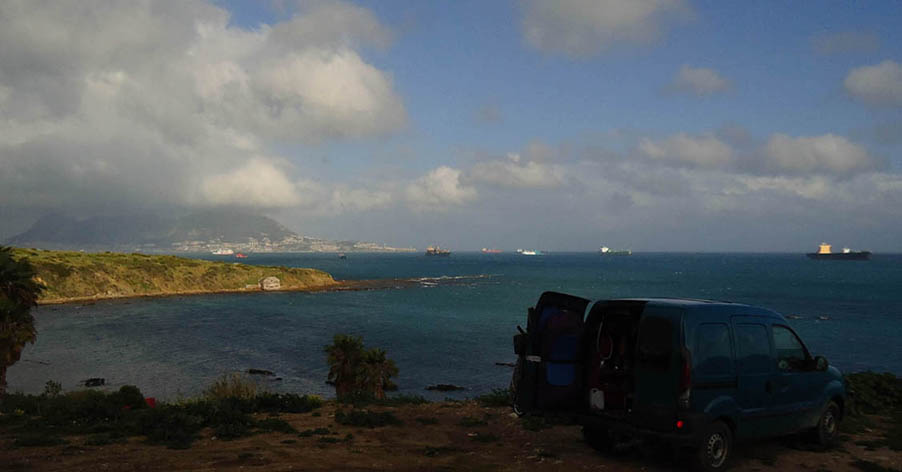
... Algeciraz, Spain, where the ferries to Morocco leave,
Gibraltar to the East ...
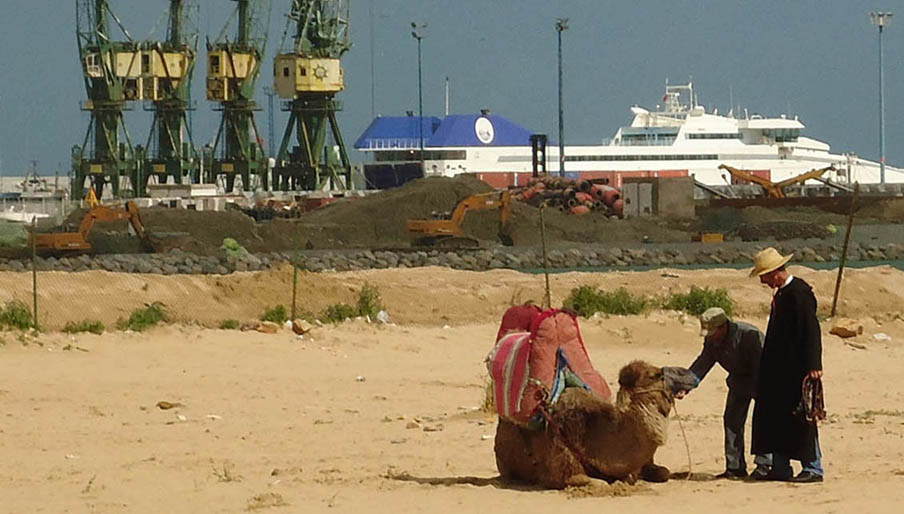
... Arrival in Morocco! Off the ferry your camel
is waiting ...
No, the camel is untypical indeed. All consumed? Until Marrakech I found few
"non European" views to take pictures of. Perfect 4 to 6 lane highways, high speed trains,
courteous policemen, shiny high rise buildings, clean well kept tarmac and brand new fast and silent city
trams. There are as many building cranes as in Spain but here they work! Moreover, I saw quite some
packed on lorries on the ferry that took me
here. Coastal Morocco is Europe without a euro crisis. And how could it be
different: to the South there is no mentionable trade and communication. Neither
is there much to Algeria. On the other hand goods and people move in and out to
Europe in massive amounts, bringing, by products and their advertisements and by
the traveling of emigrants Europe to every Moroccan's doorstep. There's a
web site about a Strait of Gibraltar tunnel: "The excavation of a tunnel
joining Europe and Africa .. could start as early as next year".
The
differences: Morocco is a lot
cheaper and alcohol is quite a bit harder to find. No problem: recovering from
my lung infection I was happy to stay with the delicious fruit juices and
coffees, now called "cappuccino" and "espresso" in neatly tiled shiny modern
"cafés" looking decisively French. And French we speak! Finally after all
my Spanish hand-and-feet wrestling, I had my chat again left and right. And it
seems to every Moroccan it is an honour to host a European guests. After
two coffees served with a big, if not proud smile they have given you all sights
of town to write down. Why don't I moor a boat to live
on in the Tanger harbour?
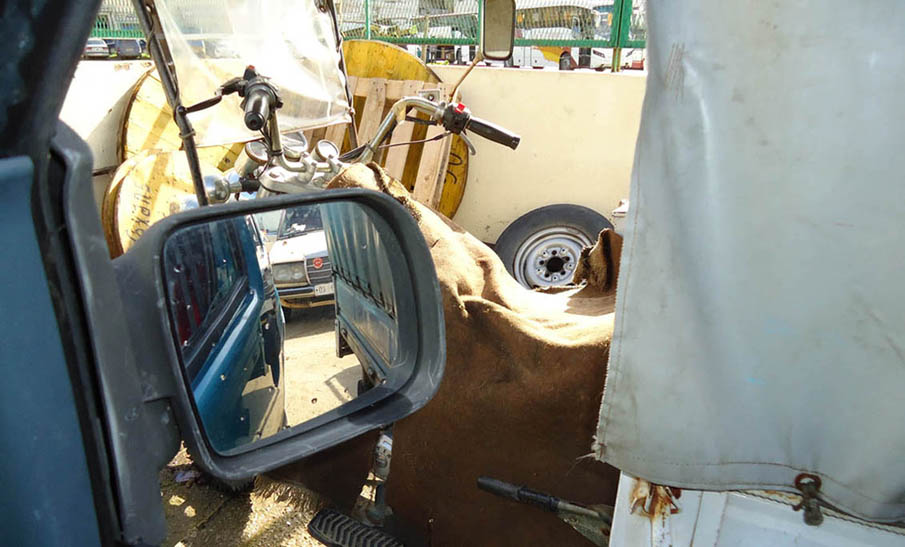
... my first night parking Tanger
town, a scrap yard? No, all rusty vehicles drive ...

... on Djemaa El-Fna, heart of the old town
I found some
tourists but 80% Marrakeshi ...
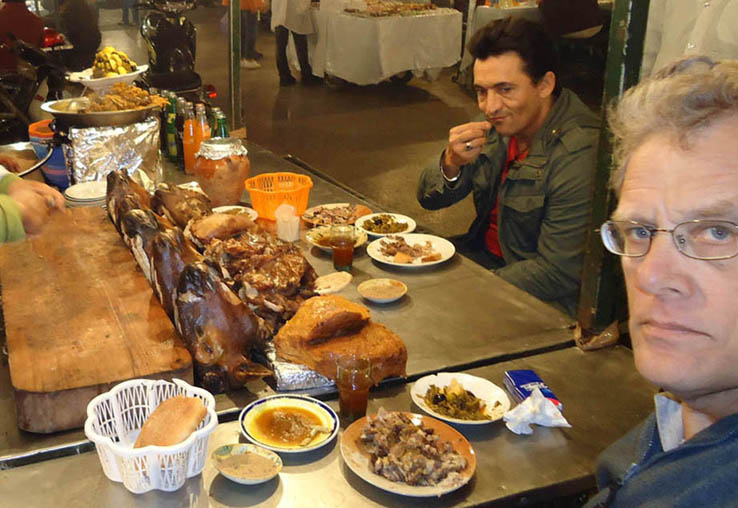
... 0% tourists at this type of Djemaa El-Fna
tent-counter, though they came to ask me what I
was eating ... no doubt the ardent observer sees the five goat heads right of my
host's chopping board ... and that's what's on my plate too ...
The tape played in the tourist bus if not even the bus route itself, seems like having been edited by the King personally. Realizing that we tourists come for the old stuff, the King wishes to improve Morocco's image by also showing us modern clean shiny boulevards (named after himself, his father and grandfather). More than 15 times during the trip the tape plays: "combining tradition and modernity". The catholic cathedral, now maintained by the state, since all Catholics are gone and the bishopric formally abolished, is a "hallmark of the religious tolerance in Morocco".

... up into the Atlas ...
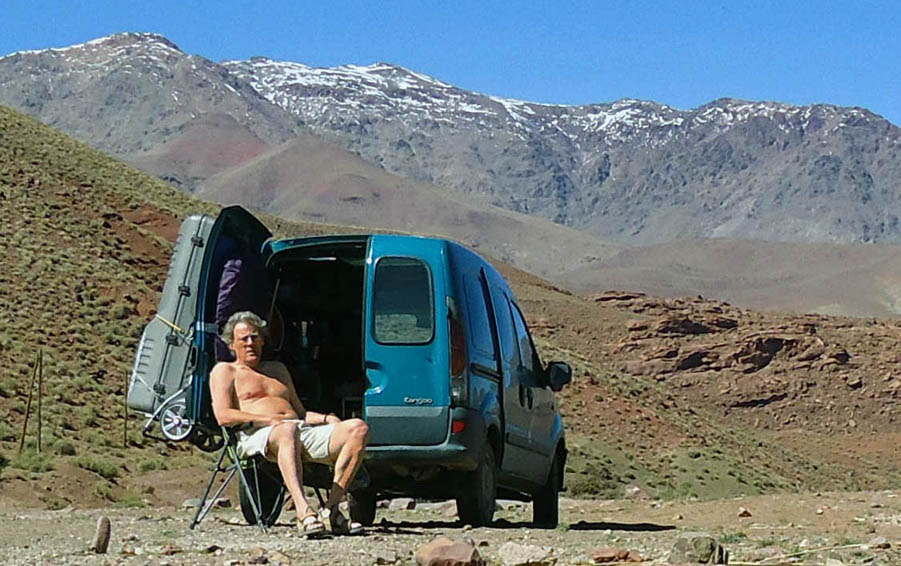
... Atlas descent at the desert
side ...

... Ouarzazate ...
Just before reaching Ouarzazate, my first sizeable desert town, I almost got knocked by a opposing moped, speeding, driven by a wildly flying totally covering black burka, racing downhill from a side road, two eyes estimating, each through their own hole, my readiness to pull the breaks, and judging it present. It was.
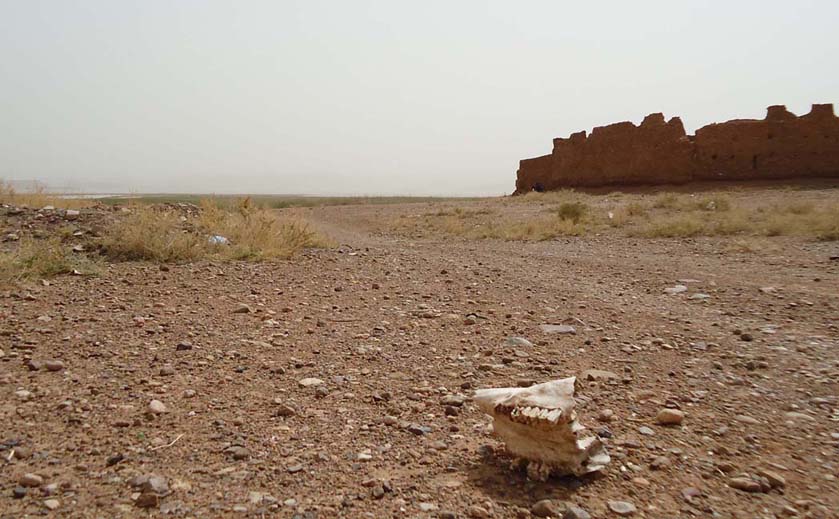
... after taking this picture I nervously bought 6
big water bottles (four of which were still full back in Spain) ...
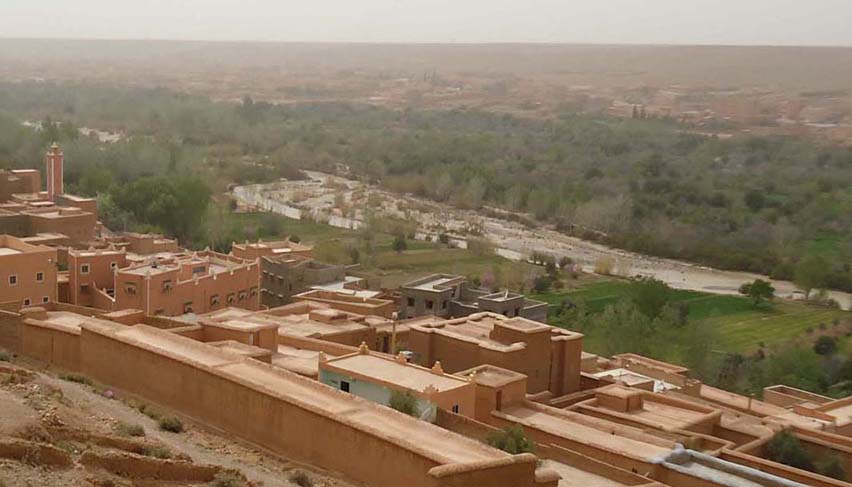
... small green strips both sides
of the river, olives, oranges, rozes (for oil and perfume) ... rather large housing
districts ...
... one often wonders how so many people can be sustained by
such a small green area ...
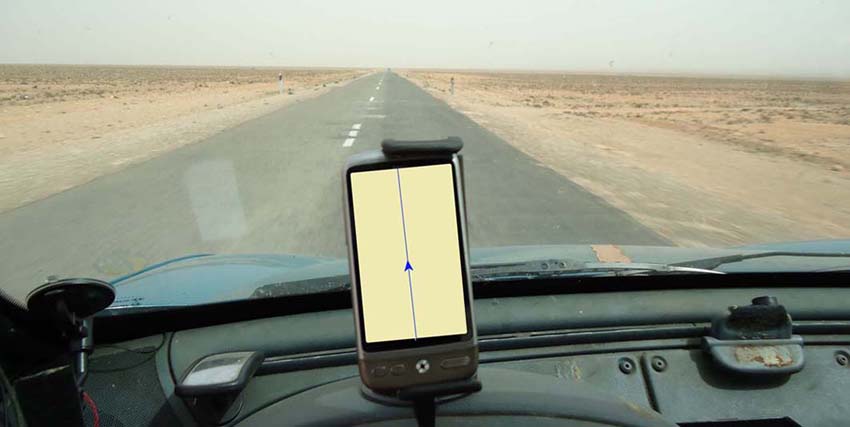
... this road connects two such
valleys ...
The desert side of the Atlas struck me with a friendly atmosphere with a great sense of community. The tourist is trusted as the local: I found few locked doors and valuables (e.g. the mineral stones eagerly on offer at the road sides) in houses, even in hotels, even in unguarded rooms are exposed. Since this is for long, trust here seems to trigger trustworthiness.
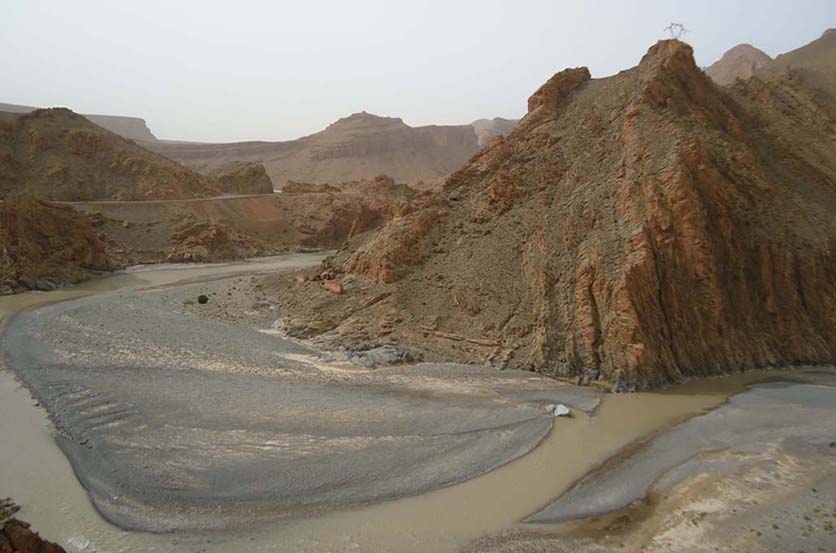
... a river going down the East slope of the Atlas ...
see what a place looks like if it's always dry and the Eastward river streams
bring water only from faraway high mountain rains ...
... the West slope of the Atlas
is green: that is where the moist ocean air drops its water ...
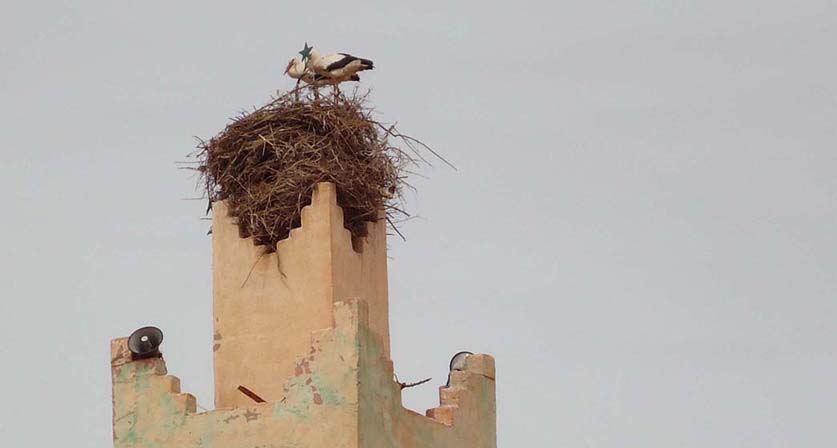
... the tops of the mosques are
stork territory ...
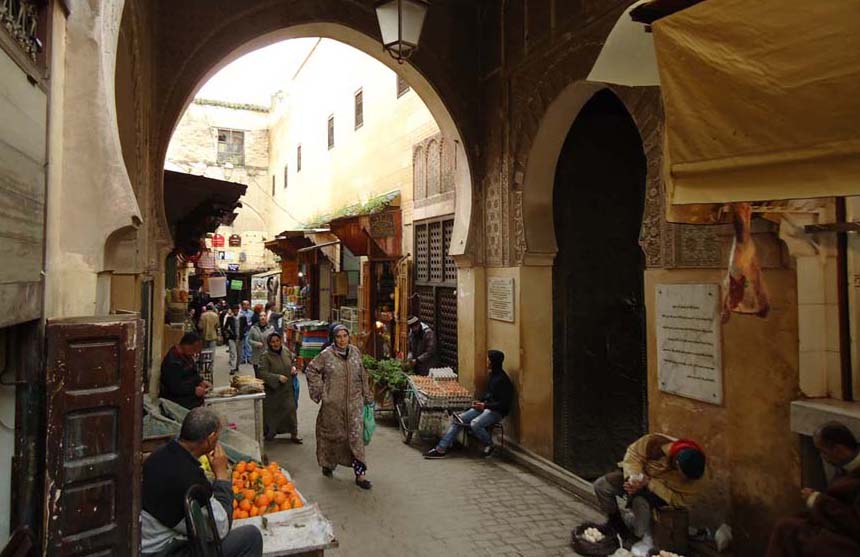
... Fez, after I crossed the Atlas back to the West
side ...
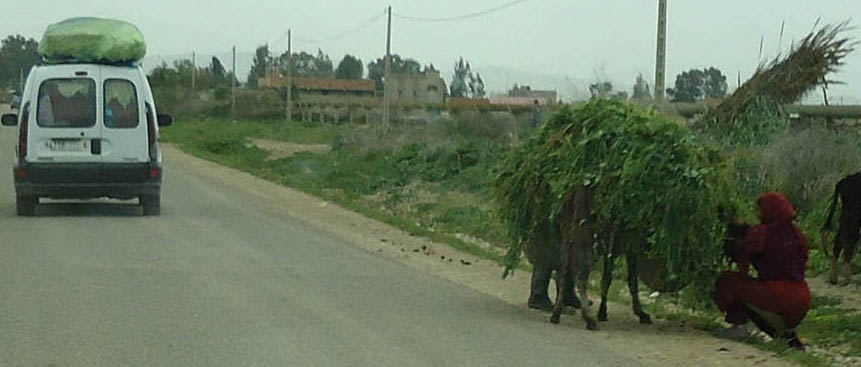
... Morocco's two favourite means of
transport: donkey and Kangoo ...
I approach Ceuta, the Spanish enclave in Morocco. A long jam of
border crossing vehicles gets harassed by shady people who claim that they can
speed up things.
African scenes. Except: in Africa the border thugs ("agents")
are paying tributes to border control officers and wear spic-and-span suits.
Here, officers simply ignore them and no one who can afford such a suit needs to
be in this dodgy business.
Then, I enter a city full of old European
buildings, including castles, fortifications and catholic churches. Prices
wildly up, but only to the Spanish level, which is still quite cheap to Northern
European standards.
Coffees, 10 eurocent in Morocco, a euro in Ceuta. Moving further North, they gradually rise in price until I start to make my own again - with Moroccan beans.
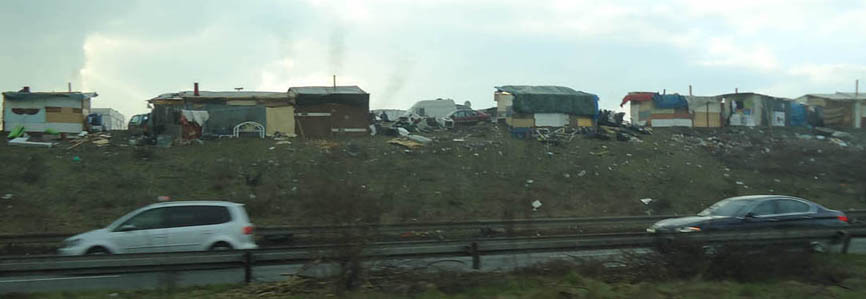
... if I correctly remember I took
this picture between Paris and Charles de Gaulle airport (about decimal degrees:
48.977062,2.487373)...